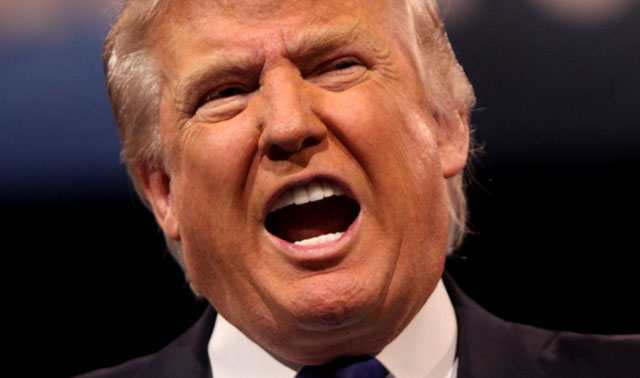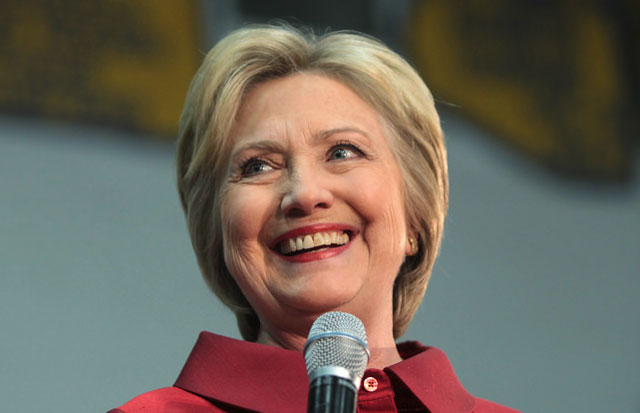
Donald Trump was elected the 45th president of the US in a repudiation of the political establishment that jolted financial markets and likely will reorder the nation’s priorities and fundamentally alter America’s relationship with the world.
The property developer and reality television star, a Republican who has never held public office, defeated Democrat Hillary Clinton after a punishing campaign that exposed searing divides in the American public. She would have been America’s first woman president.
Trump, 70, was projected to be the victor early on Wednesday by the Associated Press and TV networks after Wisconsin pushed him over the 270 Electoral College vote threshold needed to become president-elect. When sworn in on 20 January, Trump will preside over a government he’s called corrupt and unworthy of trust.
Clinton had not conceded and her campaign manager, John Podesta, told a crowd of supporters at the Javits Center early Wednesday before Wisconsin was called that the campaign was still awaiting final vote counts and would have nothing more to say.
In financial markets, panicked traders rushed to unwind bets they piled into over the last two days amid polls suggesting Clinton would sweep to victory. Futures on the Standard & Poor’s 500 plunged by 5%, triggering trading limits. Mexico’s peso — which has weakened as Trump’s prospects improved — sank by the most in two decades on concern a Trump win would lead to more protectionist US trade policies.
Republicans also maintained their control of the senate as they scored wins in a handful of tight races among the 34 being contested. In the house, all 435 seats were on the ballot across the country and Republicans were forecast to hold their majority, though with a slimmer margin. That will give Republicans the opportunity to enact the agenda that Trump rode to victory, including repealing the Affordable Care Act, cracking down on immigration and rewriting trade deals.
Trump tallied up victory after victory in Republican strongholds and crucial swing states including Florida, North Carolina, Iowa and Ohio. By Wednesday morning he had breached Clinton’s electoral firewall in the Rust-Belt by winning Pennsylvania, a state that had been in the Democratic column since 1992.
Initially dismissed
Initially dismissed as little more than an entertainer promoting his brand, Trump overcame a deficit in polls and public approval, deep ambivalence within the Republican Party and a campaign marred by controversies and stumbles that would have knocked any other candidate in any other year out of the race.
With a knack for making himself the centre of the conversation — for good and for ill — the savvy showman in Trump pressed forward with a message that he could “make America great again”. That found resonance in a portion of the electorate anxious and angry about economic, cultural and social upheaval. His rhetoric on immigrants, Muslims and minority groups also energised fringe groups outside the political mainstream.
That he sometimes contradicted himself on positions, and that many of his statements were declared false by independent fact checkers, didn’t seem to shake his core supporters. This infuriated Democrats who looked on spluttering and aghast as a man they considered little more than a bigoted charlatan always seemed to emerge unscathed.
Eight years after electing the first black president, voters passed up the chance to make history again, and in doing so, passed over a women who had previously served as US senator, secretary of state and was first lady when her husband, Bill Clinton, was president.
Her resume could not outrun her reputation among many voters as not trustworthy, fears that were stirred up again by a late flurry of FBI attention — just 11 days before the election — on her prior use of a private e-mail server when she was secretary of state. Cleared of any crime for a second time, Clinton was nonetheless hobbled.
Trump’s win also served as a rebuke to President Barack Obama, who campaigned on Clinton’s behalf by saying his legacy was on the line.
For Trump, running the federal government could prove even more difficult following a campaign defined more by what he opposed than what he proposed. Some prominent members of his own party, including 2012 nominee Mitt Romney, denounced him. Others, such as house speaker Paul Ryan of Wisconsin, said they would vote for Trump but did not appear with him on the campaign trail.
Throughout the campaign, Trump departed from many presidential campaign traditions. He declined to travel on the same plane with a pool of reporters and photographers and refused to release his federal tax returns, something nominees from both parties have done for decades.
The victory by the political novice came despite faltering performances in three debates with Clinton and an explosive scandal one month before Election Day: the release of a 2005 recording of him bragging about being able to grope women because of his celebrity status. That was followed by a dozen women coming forward to say they had been the victims of his unwanted sexual advances. On the stump and on Twitter, Trump veered off his campaign message to lash out at critics. As recently as the morning of 28 October, polls suggested he could be headed for a potential landslide defeat.
That was before the renewed scrutiny by the FBI of Clinton’s e-mail, revealed in a letter to lawmakers by director James Comey. That development rattled the stock market and Democrats in the closing days of the campaign and reminded voters of Clinton’s political mistakes and baggage.
Comey sent another letter the Sunday before the election announcing that the review of the additional e-mails from a Clinton aide was completed, and he reaffirmed the bureau’s conclusion in July that Clinton shouldn’t face criminal charges. While that removed a cloud over Clinton before voters went to the polls, it couldn’t reverse the damage already done to her standing in the race and by the suspicions that existed while millions of voters were casting early ballots.
Trump pounced on the first letter to reinforce voter questions about Clinton’s trustworthiness and to amplify his campaign theme that she was a corrupt political insider. He was also aided by the daily release by WikiLeaks of hacked material from Clinton’s campaign chairman, buttressing his daily depiction of her as “crooked”.
The billionaire spent the last week of the campaign more disciplined at rallies and on Twitter, reminding himself out loud in one speech, on 2 November, to “stay on point, Donald”. He also frequently compared the election to Brexit, the UK’s vote on 23 June to leave the European Union that defied polls and confounded the political and business establishments.
Margaret Yang, a CMC Markets analyst who was interviewed before the election’s outcome was known, predicted a Trump victory would trigger “a massive selloff’’ of US equities. Many investors will consider it a classic “black swan event”, so the reaction would be more severe than Brexit, Yang said. That event caused the S&P 500 Index to fall 5,3% in two days, as benchmarks in Europe and elsewhere lost even more.

Trump’s shifting policy positions during the campaign make his longer-term impact on particular sectors harder to assess. BlackRock’s analysis suggests that drug makers, insurers and banks would do better under Trump than Clinton.
When he entered the race on 16 June 2015, riding down a golden escalator with his wife at Trump Tower in New York, Trump wasn’t considered a contender. He vowed to build a wall on the southern US border and said that Mexicans coming into the country illegally were “bringing drugs, they’re bringing crime, they’re rapists, and some, I assume, are good people”.
Largely written off by political professionals and experienced analysts, Trump outlasted a Republican field including senators, governors and former governors. He painted himself as the ultimate outsider in a year when Republican voters were hungry for change. Trump appealed to white, working-class voters with his staunch anti-immigration stance, fiery opposition to free-trade deals, and a promise to reopen factories and bring back jobs from overseas at time voters are economically insecure.
While critics counted the number of times he lied or said outrageous things, his supporters chanted “Build that wall!” and “Lock her up!” about Clinton at rallies. They praised his willingness to “tell it like it is” and said his wealth and business background meant he wasn’t beholden to special interests and could shake up a political system and economy that worked for elites but not for them.
Trump surged in early primaries with the help of extensive cable TVcoverage, and he ultimately outlasted the more experienced candidates with his populist appeal and by branding opponents as “low energy” or liars.
Trump accepted the Republican nomination in July in Cleveland, promising to be a law-and-order president who would fight Islamic terrorism and be the last, best hope to change the status quo.
“I have joined the political arena so that the powerful can no longer beat up on people who cannot defend themselves,” he said then. “Nobody knows the system better than me — which is why I alone can fix it.”
Clinton’s main argument during the campaign was that Trump, who had never run for office before, was unfit and unqualified to be president and commander-in-chief, with few policy plans beyond platitudes. She raised the spectre in the final days of the campaign of an unhinged Trump launching a nuclear strike over a petty disagreement.
The Democratic nominee hammered Trump repeatedly for his treatment of women, minorities and the disabled, his lack of any relevant experience, and a suspect temperament highlighted by his 3am Twitter postings. She suggested the reason for Trump’s unprecedented refusal to release his tax returns was that he has failed to pay income levies for years and that his foreign business interests that could conflict with his role as president.
Trump deflected those criticisms. He successfully demonised the media as biased, took advantage of Clinton’s unpopularity, and showed that he could overcome the lack of a traditional campaign and get-out-the-vote operation with celebrity.
Trump, who had flirted with presidential bids from 1998 to 2012, was raised in New York and took control of his father’s real-estate development firm in the 1970s. He refashioned and expanded what became the Trump Organisation with skyscrapers, golf resorts, and other properties, building a personal brand by putting his name on buildings, beauty pageants, steaks and menswear. — (c) 2016 Bloomberg LP

